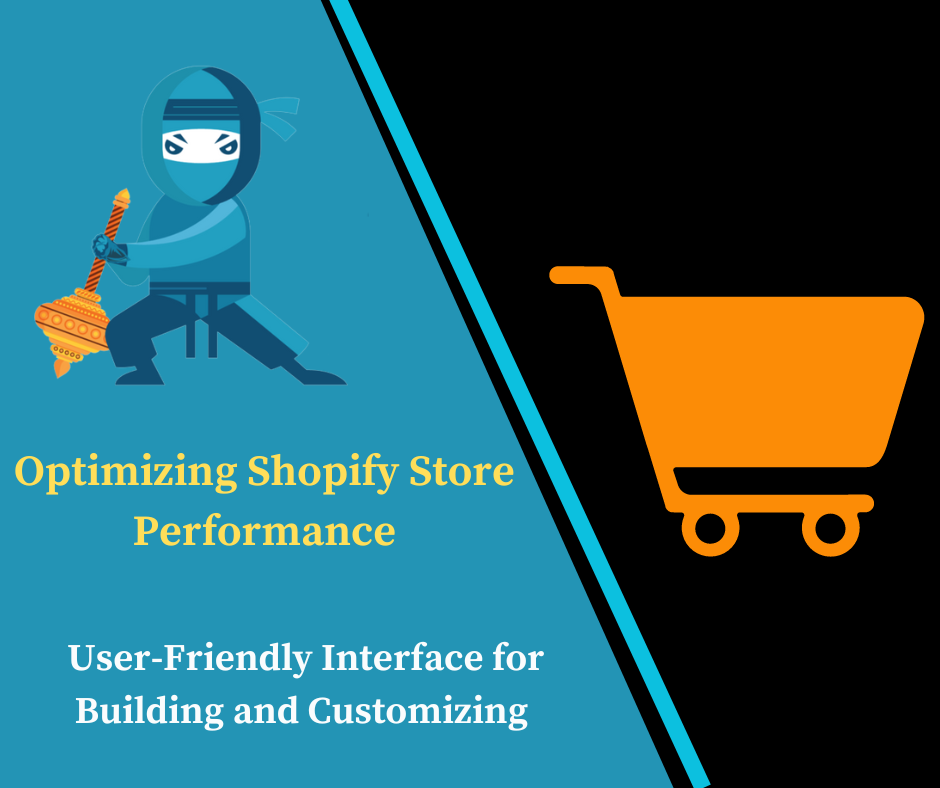Shopify is an e-commerce platform that allows individuals and businesses to create and manage their online stores. It provides a user-friendly interface for building and customizing storefronts without needing extensive technical knowledge. Shopify handles all aspects of running an online store, including hosting, payment processing, and inventory management. Merchants can choose from various templates and apps to customize their store’s appearance and functionality, making it suitable for a wide range of businesses, Shopify also offers marketing tools, analytics, and support to help merchants grow their businesses online.
Optimizing Shopify Store Performance:
1.Speed Optimization: Ensure your Shopify store loads quickly across devices. This involves optimizing images, leveraging browser caching, minimizing CSS and JavaScript files, and using a content delivery network (CDN) to serve content faster.
2.Mobile Responsiveness: With a growing number of users shopping on mobile devices, ensuring your Shopify store is fully responsive and provides a seamless experience on smartphones and tablets is crucial. This includes testing and optimizing the layout, navigation, and functionality for mobile users.
3.SEO (Search Engine Optimization): Improve your store’s visibility in search engine results by optimizing product descriptions, meta tags, URLs, and headings with relevant keywords. Implementing structured data markup (like schema.org) can also help search engines better understand your content.
Also read Enhance Your Site with WordPress Themes
4.User Experience (UX): Enhance the overall user experience by simplifying navigation, ensuring intuitive design, and optimizing checkout processes. Pay attention to factors such as site structure, loading times, and accessibility to create a positive interaction for visitors.
5.App and Code Optimization: Evaluate and optimize third-party Shopify apps to minimize their impact on site performance. Clean up and streamline your store’s code to reduce unnecessary scripts and improve loading times.
Also read Design Portfolio | Creative Brilliance
6.Security and Reliability: Ensure your Shopify store is secure by using HTTPS, maintaining PCI compliance for payment processing, and regularly updating software and plugins to prevent vulnerabilities.
7.Analytics and Monitoring: Continuously monitor your Shopify store’s performance metrics such as traffic, bounce rates, conversion rates, and page load times. Use analytics tools to identify areas for improvement and track the effectiveness of optimizations over time.

Best Practices for Shopify Store Management:
1.Responsive Design: Choose a Shopify theme that is responsive and mobile-friendly to ensure a seamless experience across all devices. Tools like Shopify Theme Store offer a variety of responsive themes to choose from.
2.SEO Optimization: Optimize your store for search engines by using relevant keywords in product titles, descriptions, meta tags, and URLs. Tools like SEO Manager and Plug in SEO can help automate and optimize SEO tasks.
3.Image Optimization: Compress and optimize images to improve page loading speed without compromising quality. Shopify’s built-in image editor and apps like Optimizilla or ImageKit can assist with image optimization.
4.Analytics and Reporting: Monitor key performance metrics such as traffic, conversion rates, and average order value using Shopify’s built-in analytics and tools like Google Analytics integration for more detailed insights.
5.Customer Support: Offer excellent customer support through tools like Zendesk or Gorgias for efficient ticket management and live chat support directly on your Shopify store.
6.Email Marketing: Engage with customers through email marketing campaigns using tools like Klaviyo or Mailchimp, integrated seamlessly with Shopify to send personalized emails and automate marketing workflows.
7.Inventory Management: Streamline inventory management with tools like TradeGecko or Stocky to track stock levels, manage orders, and synchronize inventory across multiple sales channels.
8.Social Media Integration: Utilize social media integration tools like Hootsuite or Buffer to schedule posts, monitor social media activity, and drive traffic from social platforms to your Shopify store.
10.Security and Backup: Ensure the security of your Shopify store with tools like Rewind for automated backups and Shop Secure for security monitoring and protection against threats.
Here’s an overview of how Shopify works:
1.Store Creation:
Sign Up: To get started, you sign up for a Shopify account on their website.
Choose a Plan: Shopify offers different pricing plans based on your needs, from basic to advanced features.
Set Up Your Store: Once signed up, you can set up your store by choosing a store name, adding products, customizing the design using Shopify’s themes, and configuring settings like shipping options and tax rates.
2.Product Management:
Add Products: You can add products manually or import them in bulk using CSV files.
Product Details: Each product can have detailed descriptions, images, variants (like size or color), pricing, and inventory tracking.
3.Design and Customization:
Themes: Shopify provides a variety of customizable themes. You can choose a theme and customize it using Shopify’s theme editor or by editing HTML/CSS if you have coding skills.
Customization: Customize your store’s appearance, layout, colors, fonts, and more to match your brand identity.
4.Sales Channels:
Online Store: Your Shopify store serves as your primary online sales channel.
Point of Sale (POS): Shopify POS allows you to sell in-person using compatible hardware, sync inventory, and manage orders from both online and offline sales.
5.Payments:
Shopify Payments: Shopify has its own integrated payment gateway, Shopify Payments, which simplifies the checkout process for customers.
Third-Party Gateways: Alternatively, you can also integrate other payment gateways like PayPal, Stripe, or others depending on your preferences and location.
6.Order Management:
Orders: View and manage orders directly within Shopify, including order fulfillment, tracking, and customer notifications.
Customer Management: Manage customer profiles, view order history, and communicate with customers via Shopify’s built-in tools or third-party apps.
7.Marketing and SEO:
SEO Tools: Optimize your store for search engines by editing meta tags, URLs, and using Shopify’s SEO features.
Marketing: Use Shopify’s marketing tools and integrations (like email marketing apps) to run promotional campaigns, discounts, and abandoned cart recovery emails.
8.Analytics and Reports:
Analytics Dashboard: Shopify provides built-in analytics to track sales, website traffic, and customer behavior.
Reports: Generate detailed reports on sales, inventory levels, customer demographics, and more to make informed business decisions.
9.Apps and Integrations:
App Store: Shopify’s App Store offers a wide range of apps and integrations for additional features and functionalities, such as customer reviews, loyalty programs, and shipping calculators.
APIs: Shopify’s robust APIs allow developers to build custom integrations and automate tasks to extend Shopify’s capabilities.
10.Security and Support:
Security: Shopify handles security, including PCI compliance and SSL encryption, to ensure safe transactions and protect customer data.
Support: Shopify offers 24/7 customer support via phone, email, and live chat, along with extensive documentation and community forums for assistance.
FAQ:
How do I optimize images on my Shopify store?
Optimize images by resizing them to the correct dimensions, compressing them without losing quality (using tools like TinyPNG), and using lazy loading to defer offscreen images until they’re needed.
Why is page speed important for Shopify stores?
Faster loading times improve user experience, reduce bounce rates, and can positively impact SEO rankings, leading to higher conversions and revenue.
Conclusion:
Optimizing your Shopify store’s performance is a continuous process that involves addressing speed, user experience, SEO, and mobile responsiveness. By implementing these strategies and staying proactive with updates and optimizations, you can create a compelling online shopping experience that drives traffic, enhances conversions, and fosters customer loyalty. Regularly monitor and analyze performance metrics to identify areas for improvement and ensure your Shopify store remains competitive and efficient in the dynamic ecommerce environment.








